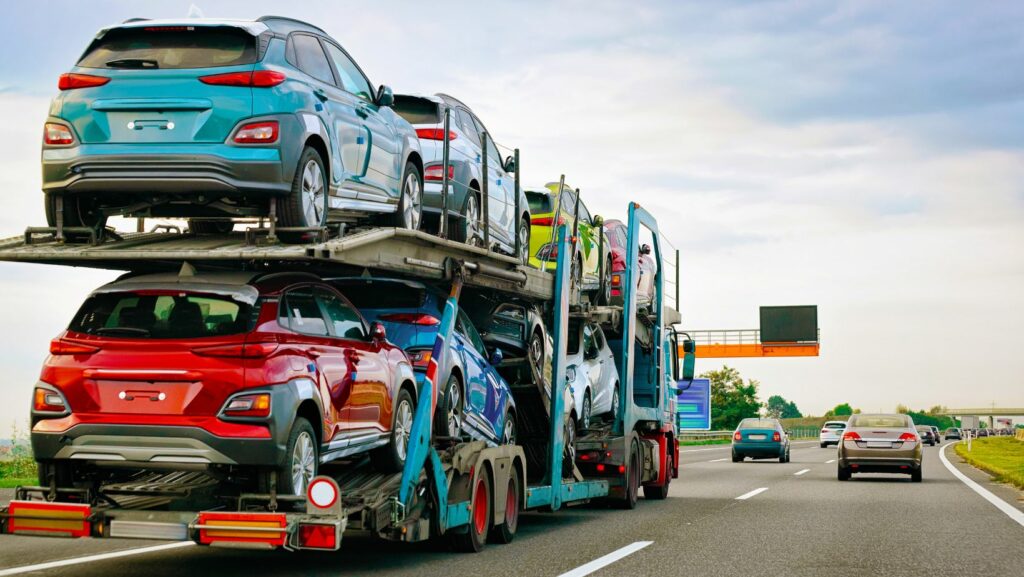
Loading and transporting vehicles on car hauler trailers is a crucial aspect of the automotive industry. Whether for delivery to dealerships, auctions, or individuals, the safe and secure transportation of vehicles is essential for maintaining their value and preventing any damage.
However, the process of loading and transporting a vehicle on a car hauler trailer can be complex and requires careful attention to detail. From properly securing the vehicles to ensuring the trailer is balanced and stable, there are several best practices that must be followed to ensure the safety and security of both the vehicles and the drivers.
In this article, we will discuss the best practices for loading and transporting vehicles on car hauler trailers, providing valuable insights for dealerships, trucking companies, and individuals involved in the transportation of vehicles. So, let’s dive into the details and explore the steps for ensuring safety and security when loading and transporting vehicles on car hauler trailers.
Securely Strap Down All Vehicles
When it comes to securely strapping down all vehicles on car hauler trailers, there are several important considerations to keep in mind. First and foremost, the choice of straps and restraints should be carefully selected to ensure they are specifically designed for securing vehicles. Using high-quality, heavy-duty straps with sufficient strength and tension capabilities is vital.
Additionally, it is essential to properly position and secure the straps to each vehicle, taking into account their unique characteristics and dimensions. This includes attaching the straps to strong anchor points on the trailer and ensuring they are tightened securely to prevent any movement or shifting during transit.
Regular inspections of the straps and restraints should also be conducted to check for any signs of wear or damage, and any compromised equipment should be promptly replaced. By following these best practices, car hauler operators can ensure that all vehicles are safely and securely strapped down, minimizing the risk of accidents and damage and ensuring a smooth and secure transportation process.
Avoid Overloading the Trailer
To maintain safety and security during the transportation of vehicles on car hauler trailers, it is crucial to avoid overloading the trailer. Overloading can lead to a variety of issues, including compromised handling, increased braking distances, and potential damage to the trailer and vehicles.
To prevent overloading, it is essential to adhere to the manufacturer’s weight limits and specifications for the trailer. This includes considering not only the total weight of the vehicles being transported but also distributing the weight evenly across the trailer’s axles. By carefully calculating and monitoring the weight being loaded onto the trailer, operators can ensure that they stay within safe limits and maintain optimal stability and control during transport.
Check Tire Pressure and Condition
Regularly checking the tire pressure and condition is another critical aspect of ensuring safety and security when loading and transporting vehicles on car hauler trailers. Proper tire pressure is not only essential for optimal performance, but it also enhances fuel efficiency and extends tire life. Before loading any vehicles onto the trailer, it is crucial to inspect each tire thoroughly for signs of wear, such as cracks, bulges, or uneven tread wear.
Additionally, utilizing a reliable tire pressure gauge, operators should ensure that all tires are inflated to the recommended pressure levels as specified by the tire manufacturer. Neglecting to maintain proper tire pressure or neglecting tire condition can increase the risk of tire blowouts, poor handling, and potential accidents during transport. Therefore, making tire pressure and condition checks a routine part of the loading and transportation process is crucial for the overall safety and security of the operation.

Use Appropriate Towing Equipment
The use of proper towing equipment not only ensures the stability and integrity of the trailer but also minimizes the risks associated with vehicle detachment or shifting during transit. When selecting towing equipment, it is essential to consider factors such as the weight and dimensions of the vehicles being transported, as well as the trailer’s maximum load capacity.
Utilizing sturdy, properly rated tow hitches, chains, and straps specifically designed for the task at hand will provide the necessary strength and reliability to withstand the forces encountered during transportation. Neglecting to use appropriate towing equipment can jeopardize the safety of the cargo, the trailer, and other road users. By prioritizing the use of suitable towing equipment, operators can significantly reduce the potential for accidents and ensure the secure transportation of vehicles on car hauler trailers.
Conduct Pre-trip and Post-trip Inspections
To maintain safety and security during the loading and transportation of vehicles on car hauler trailers, conducting thorough pre-trip and post-trip inspections is crucial. These inspections serve as a proactive measure to identify any potential issues or hazards that may compromise the integrity of the trailer or the safety of the cargo. Prior to embarking on a journey, it is advisable to inspect the trailer’s tires, brakes, lights, and suspension system to ensure they are in optimal working condition.
Additionally, checking the fasteners, ramps, and tie-down points can help prevent any potential incidents during loading and transit. Similarly, performing post-trip inspections allows operators to assess any wear and tear, damages, or malfunctions that may have occurred during the journey. By regularly conducting these inspections and promptly addressing any concerns, operators can ensure the safe and secure transportation of vehicles on car hauler trailers.
Follow Weight Distribution Guidelines
Adhering to weight distribution guidelines is paramount when it comes to ensuring the safety and security of loading and transporting vehicles on car hauler trailers. Proper weight distribution plays a crucial role in maintaining stability and preventing accidents on the road. It is essential to distribute the weight evenly across the trailer, placing heavier vehicles or cargo towards the front and lighter ones towards the rear.
Failure to follow these guidelines can result in imbalanced loading, leading to trailer sway, reduced braking effectiveness, and potential loss of control while in transit. By meticulously adhering to weight distribution guidelines, operators can minimize risks and promote a safe and secure transportation process for both the trailer and the vehicles being transported.

Stay Alert and Drive Cautiously
To ensure the utmost safety and security while loading and transporting vehicles on car hauler trailers, it is imperative for operators to stay alert and drive cautiously at all times. This involves maintaining a high level of focus and concentration throughout the entire transportation process. Fatigue or distractions can significantly impair a driver’s ability to react swiftly to potential hazards on the road.
By staying alert, operators can anticipate and respond promptly to changing road conditions, traffic patterns, and unforeseen obstacles, reducing the likelihood of accidents or damage to the vehicles being transported. Furthermore, driving cautiously includes adhering to speed limits, maintaining a safe distance from other vehicles, and utilizing proper signaling techniques. By prioritizing alertness and cautious driving, operators can contribute to a safer and more secure transportation experience for all parties involved.
Conclusion
Following best practices for loading and transporting vehicles on car hauler trailers is crucial in ensuring the safety and security of both the vehicles and those involved in the process. By following these guidelines, we can minimize the risk of accidents, damages, and delays while also promoting a more efficient and effective transportation process.
As professionals in the industry, it is our responsibility to prioritize safety and security, and by implementing these best practices, we can achieve this goal. Let us continue to uphold these standards and strive towards a safer and more reliable car hauling industry.











